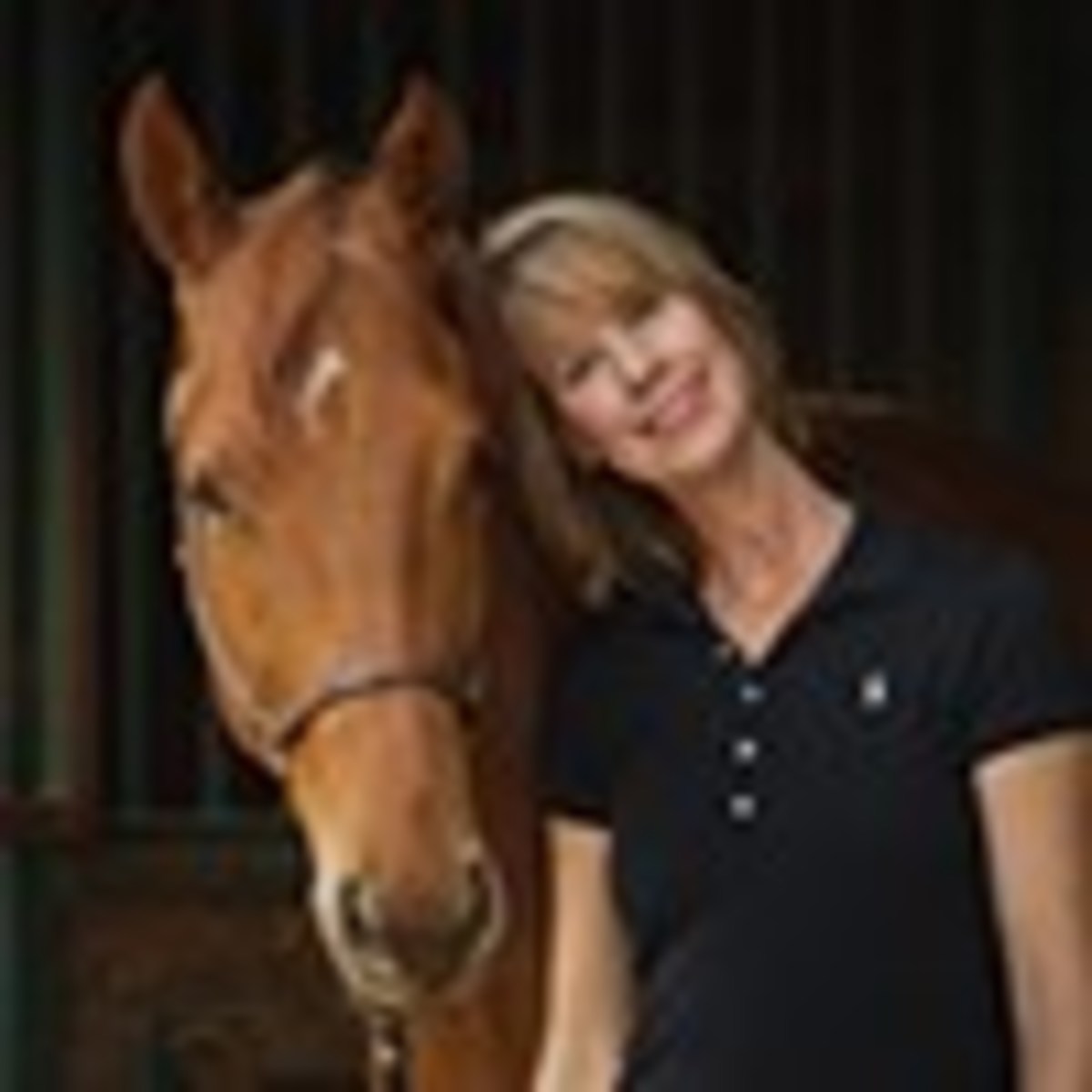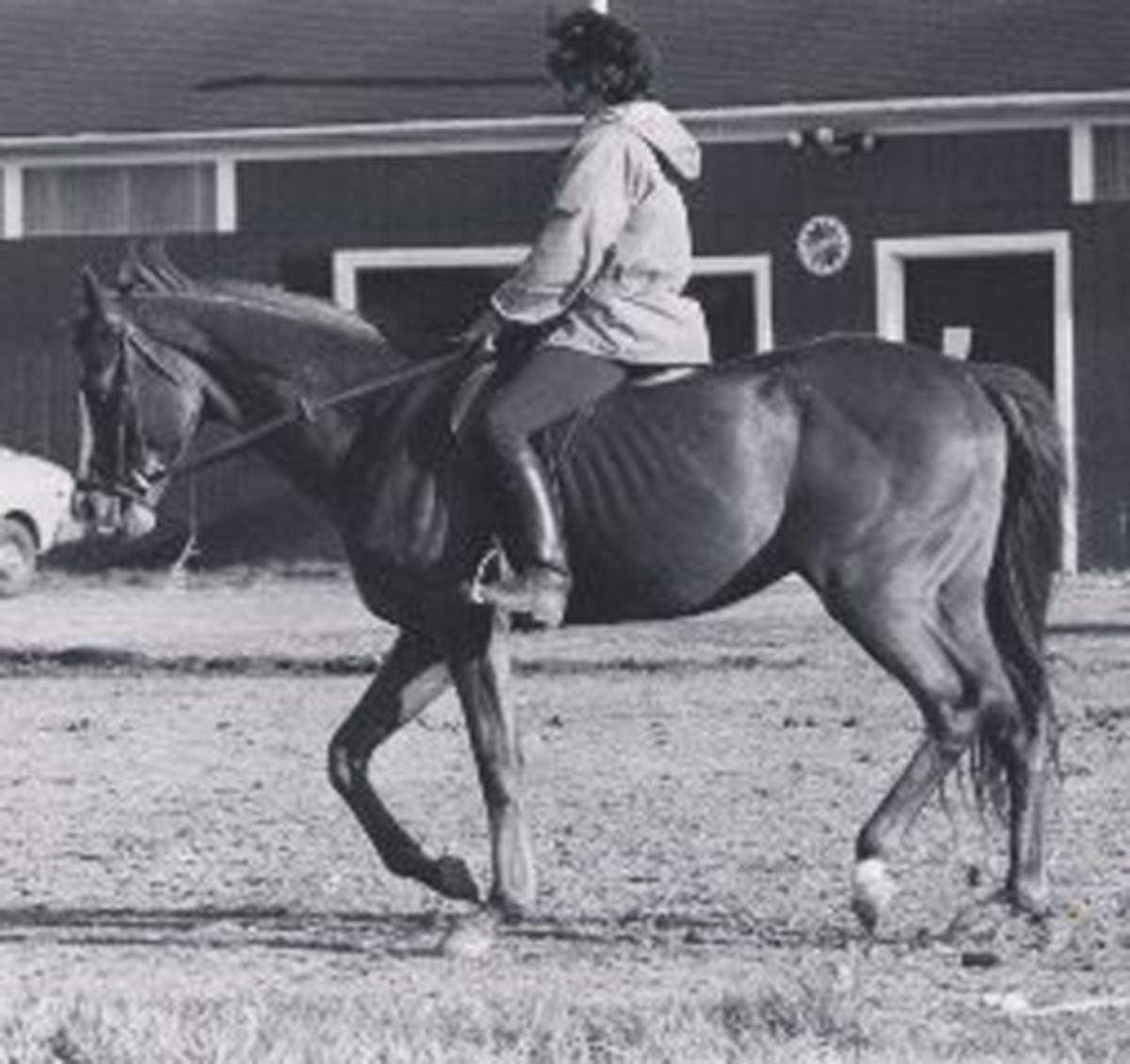As Forrest continues to enjoy his let down, I’ve been thinking about—who am I kidding, dreaming about is the more appropriate phrase after watching him float across the field—his impending training this spring.

I am blessed enough to have my own modest farm: a small barn, paddocks, an arena and enough property with adjoining trails to be able to hack out or get up in two-point and let my horses have a good hand-gallop when needed. There are also wonderful clinicians that regularly visit the area that give terrific opportunities for intense training.
But here’s what I don’t have: a covered arena, arena lights, mirrors and a big, expensive, warmblood.

And here’s what a huge number of dressage riders don’t have: their own farm, their own arena, mirrors, lights, horse trailer, the extra cash for regular lessons/clinics and a big, expensive warmblood.
So as I began to think about who I would like to approach for some eyes on the ground as I begin to work Forrest, I’ve been remembering what it was like, 23 years ago, when I was looking for a trainer to help me on my very backyard Percheron-Thoroughbred cross, Moose. I was terribly intimidated by the “BNTs” (big-name-trainers) in California and was tremendously grateful when WEG U.S. competitor, Marie Meyers, was more than amenable to have me hack over to her barn and take a weekly lesson before my financial situation improved. (I was able to remain with her, in full-training, on a succession of horses, for eight years.)
Many of you who read this blog may be feeling that same trepidation with your own horse. Do you even dare approach the trainer you admire with your budget-friendly horse? Will they consider working with something that simply doesn’t have the gaits or conformation deemed necessary to be competitive in our sport? Are they even capable of working with your nervous OTTB or ultra sensitive Arab? Will the other riders in the barn be welcoming?
Keeping all the above in mind, and knowing some well-respected trainers I felt comfortable in contacting, I couldn’t help but to keep thinking about the one person I didn’t actually know personally, but had “met” through both Facebook and as a guest as she had interviewed me a few years ago for her “Dressage Mentor” online training series: Jane Savoie.
What made me approach Jane? Certainly her competition record speaks for itself: competing as a member of the United States Equestrian Team throughout Europe, being an alternate for The 1992 Olympic Games in Barcelona, winning nine Horse of the Year awards, three National Freestyle championships as well as personally coaching at no fewer than three Olympic Games. Pretty heady stuff.
But what really makes me admire Jane, besides her kind and encouraging nature, is her success on radically different breeds of horses. Oh, yes, there have been the mouthwatering warmbloods she competed internationally, however, her current Grand Prix mount is the lovely Friesian, Moshi, and her very first horse was, yes, an OTTB named Happenstance.
To hear Jane tell the tale, Happenstance was an attractive gelding with a rehabbed bowed tendon that she picked up for pretty much her life savings in those early days: $500. And while she worked doggedly to introduce him to his second career in dressage, he could be so explosive at the canter that once, in the show ring, the judge, Colonel Thackeray, commented in his notes, “Was he stung by a bee?”

However, it was these frustrating experiences with Happenstance that introduced Jane to a series of articles that would change her and her students’ lives forever: the application of positive thinking and visualization.
So knowing that Jane is all too familiar with exactly how a nervous OTTB (although Forrest might end up being completely the opposite) feels beneath the saddle gave me the nudge to message her on Facebook and ask if she would be receptive to the idea of being a part of Team Forrest and critiquing a few video clips I could email her for feedback?

You never know until you ask, right?
Jane didn’t even hesitate. In her usual gracious and generous manner she agreed. I certainly don’t expect her to do this for gratis and this is a creative approach I’d like to share with the rest of you. There are trainers out there that will give video lessons: you send them a clip of your riding and, for a fee, they will give you detailed feedback. I’ve done this for a couple of out-of-state students in the past and it proved very helpful for them.
It’s all about thinking outside the box, isn’t it?
I’m very grateful to Jane. I wonder if she has any pointers on helping me remain patient while I visualize (of course, positively!) my and Forrest’s first ride?











